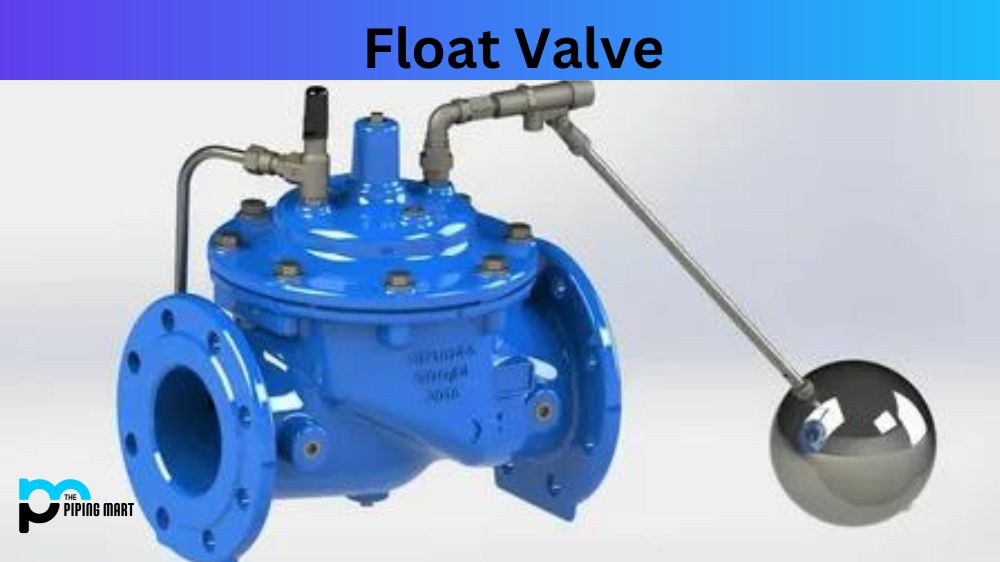Float valves are a type of valve that controls the level of liquid in a tank or reservoir. It is an automatic device that uses the buoyancy of a float to regulate the flow of liquid in and out of a tank. Float valves are widely used in industrial processes, water storage tanks, and irrigation systems. In this blog post, we will explore the properties, uses, and applications of float valves in detail.
What is Float Valve?
The float valve is a device that controls the flow of liquids and gases. It consists of two parts: a float that rises and falls with the water or gas level and an adjustable needle-valve which regulates how much flows through. When the fluid reaches a certain level, it triggers the float to block off further flow until the liquid level drops again. Float valves are commonly used in toilet tanks, holding tanks for wastewater systems, or pumps supplying fresh water to household taps.
Float Valves Properties:
Float valves consist of a valve body with a seat, a float connected to a lever arm, and a valve stem or plunger. Depending on the application, float valves can be made of different materials such as brass, stainless steel, plastic, or rubber. The important properties of float valves are their buoyancy, size, and weight.
Float Valves Types:
There are two main types of float valves: vertical and horizontal. Vertical float valves are used in tanks with limited height, whereas horizontal valves are used in low-pressure applications such as irrigation systems. Other types of float valves include pilot-operated diaphragm and needle valves.
Float Valves Uses:
Float valves regulate the liquid level in tanks, reservoirs, and other process vessels. They are commonly used in water storage tanks, cooling towers, boilers, and irrigation systems. Float valves are also used as safety devices to prevent overfilling of tanks. In the oil and gas industry, float valves control the fluid flow in drilling operations.
Float Valves Applications:
Float valves are widely used in different industries, such as agriculture, food and beverage, chemical processing, and water treatment. In agriculture, float valves are used to manage the water level in irrigation systems. In the food and beverage industry, they are used in liquid processing and storage tanks. Float valves are also used in petrochemical plants, power plants, and wastewater treatment facilities.
Float Valves Benefits:
The main benefit of float valves is that they provide a cost-effective and reliable way to regulate fluid levels in tanks and reservoirs. They also allow for automated operation, which saves time and reduces labour costs. Float valves are easy to install and require minimal maintenance. They are designed to withstand harsh environments and extreme temperatures.
How to Use a Float Valve:
Before anything else, make sure you have the right float valve, depending on its intended application. Clean the valve regularly to remove any debris or sediment that may cause it to malfunction. You can do this by dismantling the valve and cleaning it in water. Ensure that the float valve has easy access in case you need to inspect or repair it.
Conclusion:
Float valves are essential components in many industrial processes and applications. Whether you need to regulate the water level in a storage tank or control the flow of fluids in a chemical processing plant, float valves provide a reliable and cost-effective solution. Understanding the properties and uses of float valves is essential for selecting the right valve for your application. We hope this blog post has provided valuable insights into float valves.
Sakshee is a talented blogger, with a particular focus on the Business and Metal Industry. She is passionate about sharing her insights on various metal products and helping professionals to make a better decisions.




